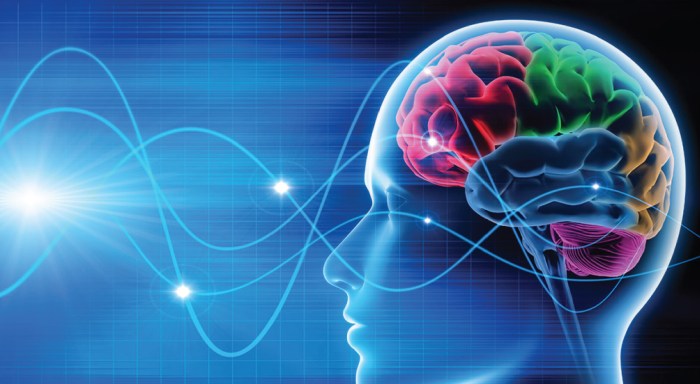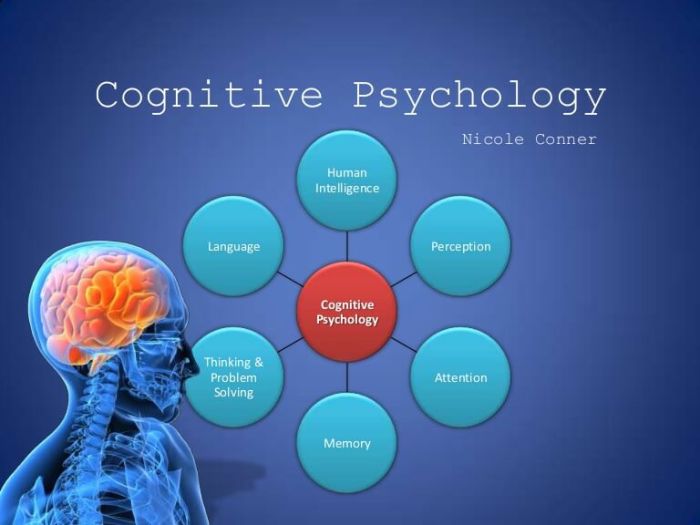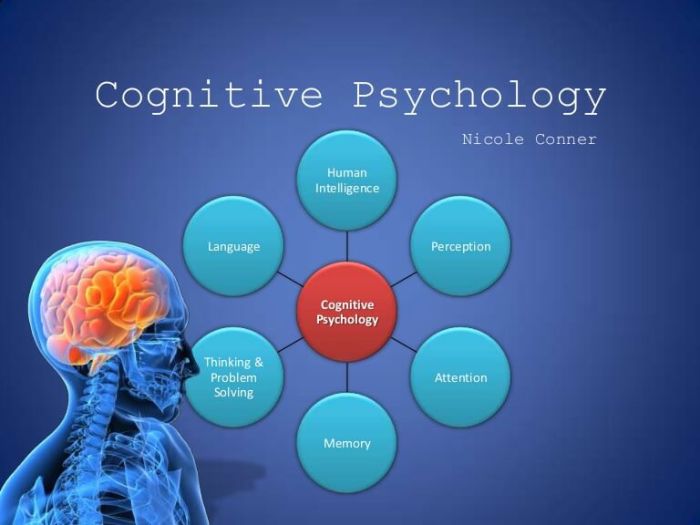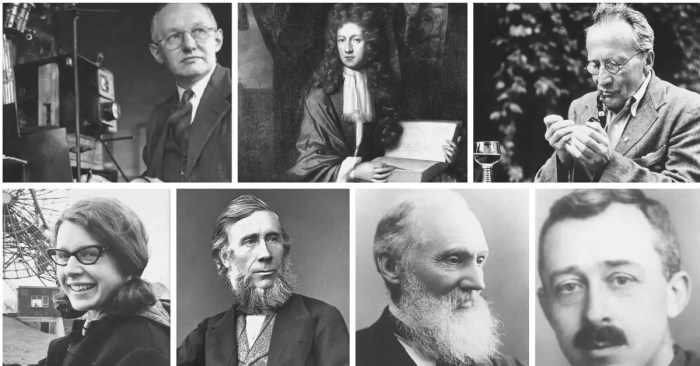What is cognitive dissonance? It’s the uncomfortable feeling we get when our beliefs clash with our actions. This fascinating psychological phenomenon explores how we reconcile these internal conflicts, impacting everything from our personal relationships to our purchasing decisions. We’ll unravel the complexities of this theory, from its historical roots to its real-world applications, and delve into the strategies we use to reduce this inner tension.
This exploration will cover the definition of cognitive dissonance, highlighting its key elements and psychological underpinnings. We’ll analyze different types of dissonance, examining the factors that contribute to their formation and providing real-world examples. Further, we’ll investigate the impact of dissonance on attitudes, behaviors, and decision-making processes, along with how it influences interpersonal relationships. The discussion will also include strategies for reducing dissonance, examining the psychological mechanisms behind these methods, and exploring their application in various scenarios.
Defining Cognitive Dissonance: What Is Cognitive Dissonance

Cognitive dissonance is a fascinating psychological phenomenon that describes the mental discomfort experienced when holding two or more conflicting beliefs, ideas, or values. This internal conflict can stem from actions that contradict personal values, or from contradictory information received from the outside world. Understanding cognitive dissonance is key to comprehending how individuals reconcile inconsistencies and maintain a sense of psychological balance.Cognitive dissonance is not simply a feeling of unease; it’s a driving force behind behavioral changes and rationalizations.
Individuals actively seek to reduce this dissonance, often through altering their beliefs or behaviors to align them with each other. This dynamic process is crucial in understanding human decision-making, persuasion, and social interaction.
Definition of Cognitive Dissonance
Cognitive dissonance is the psychological discomfort arising from holding two or more conflicting beliefs, ideas, or values. This internal conflict can stem from actions that contradict personal values or from contradictory information received from the outside world.
Key Elements of Cognitive Dissonance
Several key elements contribute to the experience of cognitive dissonance. These include:
- Inconsistency: The core of cognitive dissonance is the presence of incompatible thoughts, beliefs, or behaviors. This incompatibility creates the tension and discomfort.
- Awareness: Individuals must be aware of the conflict between their thoughts or actions. Subconscious inconsistencies may not trigger the same level of discomfort.
- Importance: The significance of the conflicting elements plays a role. Dissonance is more pronounced when the conflicting elements are highly important to the individual.
These elements work together to create the mental discomfort that motivates individuals to reduce dissonance.
Psychological Underpinnings of Cognitive Dissonance
The psychological underpinnings of cognitive dissonance are rooted in the human desire for consistency and a positive self-image. The experience of dissonance creates a state of imbalance, prompting individuals to restore consistency.
Cognitive dissonance, essentially, is that feeling of discomfort when your beliefs clash with your actions. It’s like when you know eating processed foods isn’t great for your health, but you still crave that pizza. And this relates directly to boosting your immune system. For example, if you’re convinced you need to eat healthier to improve your immune function but you still regularly indulge in junk food, that’s a prime example of cognitive dissonance.
Luckily, learning about healthy eating, like in Better Than Medicine 8 Foods Boost Your Immune System , can help you reduce that discomfort and work towards a healthier lifestyle, thus reducing the dissonance between your knowledge and actions. So, understanding cognitive dissonance can help you identify these conflicts and ultimately make more informed choices.
- Consistency and Self-Image: Maintaining internal consistency and a positive self-image are deeply ingrained psychological needs. Dissonance threatens this stability.
- Motivation for Change: The discomfort associated with dissonance motivates individuals to reduce it. This motivation can manifest in changing beliefs, behaviors, or even the way information is perceived.
- Rationalization: Individuals often rationalize their behaviors or beliefs to reduce dissonance. This may involve minimizing the importance of the inconsistency or reinterpreting the situation.
The motivation to reduce dissonance can be a powerful driver of human behavior.
Historical Context of the Theory
The concept of cognitive dissonance was first formally introduced by Leon Festinger in his 1957 book, “A Theory of Cognitive Dissonance.” Festinger’s research, often involving experimental studies, laid the groundwork for understanding this psychological phenomenon. The theory emerged from observations of inconsistencies in human behavior and decision-making, highlighting the internal conflict that individuals experience when faced with such inconsistencies.
Further research has built upon Festinger’s initial work, exploring the nuances and implications of cognitive dissonance across various domains.
Comparison with Related Concepts
The following table contrasts cognitive dissonance with confirmation bias and self-serving bias:
| Concept | Description | Focus | Example |
|---|---|---|---|
| Cognitive Dissonance | Discomfort caused by conflicting beliefs or behaviors. | Internal conflict and motivation to reduce it. | Smoking despite knowing it’s harmful. |
| Confirmation Bias | Seeking out and interpreting information that confirms existing beliefs. | Information processing and selective attention. | Only reading news articles that support a political stance. |
| Self-Serving Bias | Attributing successes to internal factors and failures to external factors. | Self-perception and justification. | Attributing a promotion to hard work, but blaming a poor performance review on a difficult boss. |
These concepts, while distinct, can sometimes overlap. For instance, confirmation bias might contribute to maintaining cognitive dissonance by selectively filtering information that would otherwise exacerbate the conflict.
Types of Dissonance
Cognitive dissonance isn’t a monolithic experience; it manifests in various forms, each with its unique contributing factors and real-world examples. Understanding these different types allows us to better grasp the complexities of this psychological phenomenon and its impact on individual choices and behaviors. This exploration delves into the key types of dissonance, providing insights into their underlying mechanisms and illustrating their presence in everyday situations.Different situations trigger different kinds of dissonance, influenced by factors like the importance of the conflicting cognitions, the perceived control over the situation, and the potential for future consequences.
Understanding these nuanced forms of dissonance is crucial for comprehending the wide-ranging effects of this internal conflict on human decision-making.
Ideological Dissonance
This type of dissonance arises when an individual’s beliefs clash with their actions or observations, particularly when those beliefs are deeply held ideological positions. Strong political or religious convictions can be challenged by contradictory evidence or behaviors.
- A staunch environmentalist who knowingly uses a lot of plastic may experience ideological dissonance, as their beliefs conflict with their actions.
- A person who strongly supports a specific political party might experience dissonance if they observe their chosen party’s actions contradicting their ideals.
Value Dissonance
This occurs when personal values are at odds with societal expectations or personal choices. The conflict between individual values and the demands of a particular social group or situation can lead to significant discomfort.
- A person who values frugality might experience value dissonance if they frequently purchase expensive luxury items, leading to an internal conflict.
- A highly ambitious professional who prioritizes family time might experience value dissonance when their work demands take a significant toll on their personal life.
Behavioral Dissonance
This type of dissonance stems from inconsistencies between an individual’s actions and their internal beliefs or standards. The gap between what a person intends to do and what they actually do can cause significant mental discomfort.
Cognitive dissonance, essentially, is that feeling of discomfort when our beliefs clash with our actions. It’s like having two conflicting thoughts in your head. For example, knowing vacations are good for your health and productivity, as shown in this study Vacations Boost Health & , but still putting off that much-needed break. That internal conflict is a classic example of cognitive dissonance at play.
We often rationalize or change our behavior to reduce this mental tension.
- A person who promises to exercise regularly but consistently skips workouts experiences behavioral dissonance.
- Someone who declares to be a vegan but occasionally eats meat may experience behavioral dissonance.
Decisional Dissonance
This form of dissonance specifically relates to the psychological discomfort felt after making a difficult or significant decision. The perceived downsides of the chosen option and the potential advantages of the rejected alternatives can create a sense of regret or uncertainty.
- A student choosing between two prestigious universities might experience decisional dissonance, struggling with the idea of missing out on the opportunities offered by the rejected school.
- A person accepting a challenging job opportunity might experience decisional dissonance due to the trade-offs between professional growth and personal life.
Relationship Dissonance
This dissonance arises from inconsistencies or conflicts within close relationships. Differences in values, expectations, or behaviors within a relationship can create tension and discomfort for the individuals involved.
- A couple with differing views on financial matters might experience relationship dissonance.
- A close friend choosing to prioritize other relationships over the existing one can lead to relationship dissonance.
Table of Dissonance Types
| Type of Dissonance | Description | Contributing Factors | Real-world Example |
|---|---|---|---|
| Ideological | Conflict between beliefs and actions/observations. | Deeply held beliefs, contradictory evidence, behaviors. | Environmentalist using plastic. |
| Value | Conflict between personal values and societal expectations/choices. | Personal values, social pressures, personal decisions. | Frugality vs. luxury purchases. |
| Behavioral | Inconsistency between actions and beliefs. | Intentions, actual actions, personal standards. | Promising to exercise but not doing so. |
| Decisional | Discomfort after a significant decision. | Perceived downsides of chosen option, advantages of rejected options. | Choosing between universities. |
| Relationship | Inconsistencies in close relationships. | Differences in values, expectations, behaviors. | Couple with differing financial views. |
The Impact of Dissonance
Cognitive dissonance, the uncomfortable feeling arising from conflicting beliefs and behaviors, significantly influences various aspects of human life. It’s a powerful force that motivates individuals to reduce this tension, often leading to adjustments in attitudes or actions. Understanding the impact of dissonance is crucial for comprehending decision-making, interpersonal relationships, and overall well-being.Dissonance’s effects extend far beyond simply feeling uneasy.
It actively shapes our thoughts, behaviors, and interactions with others. This impact can be seen in everything from minor daily choices to major life decisions. It’s a fundamental part of human psychology that drives us to maintain internal consistency.
Effects on Attitudes and Behaviors
Dissonance compels individuals to align their beliefs with their actions to reduce the discomfort. This can lead to significant shifts in attitudes. For example, a person who smokes despite knowing the health risks may downplay the dangers of smoking or develop justifications for their behavior. This attitude adjustment is a direct consequence of dissonance. Similarly, behaviors can change as a result of the need to reduce dissonance.
Someone who feels guilty about lying may start telling the truth more often to resolve the conflict. This change in behavior is a direct outcome of the internal conflict caused by the dissonance.
Impact on Decision-Making Processes
Cognitive dissonance profoundly affects decision-making. After making a difficult choice, individuals often experience dissonance. For instance, someone choosing between two attractive job offers may experience dissonance after accepting one, potentially feeling regret about the rejected opportunity. To reduce this dissonance, the individual may focus on the positive aspects of the chosen job and downplay the potential benefits of the other.
Cognitive dissonance is basically that feeling of discomfort when your beliefs clash with your actions. It’s like, you know you should eat healthier, but then you find yourself ordering pizza again. That’s cognitive dissonance at play! Fortunately, finding healthy, quick dinner recipes like the ones at Easy Fast Healthy Dinner Recipes Quick & can help reduce that dissonance by making healthy eating easier and more appealing.
So, next time you’re struggling with those conflicting thoughts, remember that a little planning and deliciousness can go a long way in reducing the dissonance.
This tendency to rationalize choices is a common consequence of dissonance. The more significant the decision, the more pronounced the dissonance.
Influence on Interpersonal Relationships
Dissonance also plays a critical role in interpersonal relationships. When faced with conflicting information about a friend or loved one, individuals may experience dissonance. For example, a person may have conflicting information about a friend’s behavior. This conflict can lead to attempts to reconcile the information, potentially leading to distorted perceptions or even strained relationships. If dissonance isn’t addressed, it can create and maintain tension in relationships.
Examples of Dissonance in Everyday Life
Everyday examples of dissonance abound. Consider a consumer who purchases a product they later realize isn’t as good as they thought. To reduce dissonance, they may convince themselves that the product is still valuable or that they simply didn’t use it correctly. Or, imagine a student who spends hours studying for an exam and still fails. The dissonance between their effort and the outcome may lead them to question their study habits or even the exam’s fairness.
These examples illustrate the ubiquitous nature of dissonance in our daily lives.
Summary Table: Impact of Dissonance on Various Aspects of Life
| Aspect of Life | Impact of Dissonance |
|---|---|
| Personal Relationships | Potential for distorted perceptions, strained relationships, attempts to reconcile conflicting information. |
| Work | Rationalization of job choices, adjustments in job satisfaction, potential for conflict with colleagues or superiors. |
| Health | Downplaying health risks, justifications for unhealthy behaviors, reluctance to seek or adopt healthy lifestyle changes. |
Methods of Reducing Dissonance
Cognitive dissonance isn’t just an abstract psychological concept; it’s a powerful force shaping our daily choices and behaviors. Understanding how we navigate these internal conflicts is crucial to comprehending human motivation and decision-making. This section will explore the various strategies individuals employ to alleviate the discomfort caused by dissonance, revealing the underlying psychological mechanisms and providing real-world examples.Individuals experience dissonance when their beliefs, attitudes, or behaviors clash.
This mental tension motivates them to restore consistency and equilibrium. The strategies used to reduce this dissonance often involve altering beliefs, attitudes, or behaviors to align them more closely. This can be a conscious or unconscious process, but it consistently reflects our desire for a positive self-image.
Common Dissonance Reduction Strategies
Various strategies are employed to resolve the discomfort associated with dissonance. These range from simple adjustments to deeply ingrained thought patterns. Understanding these strategies offers insights into the mechanisms driving human behavior.
- Changing Behavior: Individuals may alter their actions to align with their beliefs. For example, a smoker who recognizes the health risks might decide to quit smoking. This direct action resolves the conflict between the behavior (smoking) and the belief (smoking is harmful).
- Changing Attitudes: If changing behavior is difficult or impossible, individuals might adjust their attitudes or beliefs to better match their actions. A person who purchases an expensive item they later regret might convince themselves that the item was worth the price due to its quality or features. This re-evaluation of the attitude can reconcile the perceived conflict.
- Adding New Cognitions: Individuals can introduce new beliefs or information to justify their existing behavior or attitudes. A person who invests heavily in a particular stock that subsequently drops might rationalize their decision by focusing on the long-term potential of the company or industry. This strategy adds supporting beliefs to offset the negative implications of the initial investment.
- Minimizing the Importance of Dissonant Elements: Individuals might downplay the significance of the conflicting beliefs or behaviors. A student who fails an exam might rationalize it by claiming that the exam was unfairly difficult or that the subject matter was unimportant to their overall goals. This strategy reduces the perceived tension by reducing the importance of the dissonant element.
- Selective Exposure and Attention: Individuals may actively seek out information that supports their existing beliefs and avoid information that challenges them. A fervent supporter of a political candidate might only consume news outlets aligned with their viewpoint. This conscious or unconscious choice minimizes exposure to contradictory information, thereby reducing dissonance.
Psychological Mechanisms Behind Dissonance Reduction
The psychological mechanisms behind these strategies are rooted in our desire for consistency and a positive self-image. Cognitive dissonance theory suggests that the discomfort stemming from inconsistencies creates a drive to reduce that discomfort. This drive can manifest in various ways, each aiming to restore a sense of harmony and self-worth.
- Self-Esteem Maintenance: Inconsistencies can threaten our self-perception. Dissonance reduction strategies are often employed to maintain a positive self-image. By justifying actions or changing beliefs, individuals protect their sense of integrity and self-worth.
- Motivation to Avoid Negative Emotions: Dissonance is often associated with unpleasant emotions such as anxiety, guilt, and regret. Strategies to reduce dissonance directly address this discomfort, motivated by a desire to alleviate negative emotional states.
- Desire for Internal Consistency: Humans are naturally inclined to seek consistency between their thoughts, beliefs, and actions. The psychological discomfort of dissonance motivates individuals to restore this internal harmony.
Examples of Dissonance Reduction in Action
Dissonance reduction strategies are pervasive in everyday life.
- Consumer Behavior: A consumer might justify a purchase they later regret by highlighting the item’s unique features or the positive aspects of the shopping experience. This can include positive reviews or word-of-mouth recommendations.
- Political Behavior: A voter might rationalize their choice of candidate by downplaying the candidate’s perceived flaws or by highlighting their positive qualities. This can involve selective attention to positive campaign messages.
- Interpersonal Relationships: In close relationships, individuals might justify a partner’s actions or behaviors to maintain the relationship. This could involve ignoring or downplaying negative behaviors or emphasizing positive ones.
Comparing and Contrasting Dissonance Reduction Methods
Different dissonance reduction strategies employ varying psychological mechanisms and have distinct impacts. Strategies like changing behavior directly address the source of the inconsistency, while strategies like changing attitudes or adding new cognitions indirectly modify the individual’s internal framework.
Examples and Applications
Cognitive dissonance, the discomfort experienced when holding conflicting beliefs or values, plays a significant role in various aspects of our lives. Understanding its manifestations allows us to better comprehend human behavior and decision-making processes. This section delves into practical applications of cognitive dissonance in different contexts, illustrating how it influences our choices and actions.
Workplace Setting Scenario
A software engineer, deeply committed to ethical coding practices, is assigned to a project that requires using a potentially flawed algorithm to meet a tight deadline. The engineer feels conflicted between their personal values and the project’s demands. The pressure to deliver on time and the potential positive outcomes of the project contribute to the dissonance. To reduce this discomfort, the engineer might rationalize the use of the flawed algorithm, downplaying its risks, or perhaps even actively try to improve the algorithm’s efficiency.
Consumer Behavior Example
Consider a consumer who strongly values environmentally friendly products. They purchase a new car that is fuel-efficient and touted as eco-friendly. However, the car is manufactured using materials from a controversial supplier with a poor environmental record. This creates dissonance. The consumer might resolve this by actively seeking out information about the supplier’s sustainability practices, or perhaps even return the car and purchase a different one from a more transparent brand.
This example highlights how cognitive dissonance can influence purchasing decisions.
Political Decision-Making Case Study
A voter strongly supports a political candidate who espouses policies that are in line with their values. However, the candidate is later revealed to have taken stances on certain issues that contradict those values. This creates dissonance. The voter might downplay the contradictions, selectively focusing on aspects of the candidate’s record that align with their values. Or, they might even reconsider their support for the candidate.
This situation exemplifies how dissonance can influence political choices.
Cognitive Dissonance in Various Contexts
| Context | Example |
|---|---|
| Social | A teenager who values popularity but chooses to stand up for a marginalized friend, potentially facing peer pressure. |
| Political | A voter who initially supports a candidate but is later exposed to negative information about their background, causing them to reconsider. |
| Personal | An individual who smokes cigarettes despite knowing the health risks. |
| Relationship | A person in a relationship that is causing distress, but continuing the relationship because of the perceived benefits and investments made. |
This table provides a concise overview of cognitive dissonance in different realms.
Persuasion and Marketing Strategies
Cognitive dissonance is frequently exploited in persuasion and marketing strategies. Marketers often employ techniques that create a sense of conflict in consumers, leading to a desire to resolve it. For example, highlighting the benefits of a product while subtly suggesting a potential drawback, then offering a solution in the form of a product add-on, can drive sales. This technique leverages the consumer’s need to reduce dissonance.
Creating a feeling of limited availability, or “scarcity,” of a product also triggers cognitive dissonance by making consumers feel they are missing out on something valuable, motivating them to purchase it to avoid that feeling.
Cognitive Dissonance and the Brain
Unraveling the internal conflict of cognitive dissonance reveals a fascinating interplay between our thoughts, feelings, and the physical processes within our brains. This psychological phenomenon, where conflicting beliefs or behaviors create discomfort, isn’t just a mental state; it’s a tangible experience with measurable neural correlates. Understanding these correlates provides a deeper insight into how the brain manages and resolves these internal tensions.The brain, a complex network of interconnected neurons, responds to dissonance in predictable ways.
Different brain regions play crucial roles in experiencing and resolving this internal conflict, highlighting the intricate interplay between emotion and cognition. Physiological responses, like increased heart rate or sweating, further illustrate the physical manifestation of this mental state. Current research is uncovering the precise neural pathways involved in this dynamic process, paving the way for a more comprehensive understanding of human behavior.
Neural Correlates of Cognitive Dissonance
The brain’s response to cognitive dissonance involves a complex interplay of neural activity in various regions. Neuroimaging studies have shown activation in specific brain areas, reflecting the emotional and cognitive processes involved in experiencing and resolving this discomfort.
Brain Regions Involved in Dissonance
Several brain regions are implicated in the experience and resolution of cognitive dissonance. The anterior cingulate cortex (ACC) plays a crucial role in detecting and resolving conflict. This area is involved in monitoring discrepancies between expectations and reality, and its activity increases when dissonance is present. The insula, associated with interoception and emotional awareness, is also active, reflecting the unpleasant emotional state linked to dissonance.
The prefrontal cortex, particularly the medial prefrontal cortex (mPFC), is involved in higher-level cognitive functions, including self-referential processing and the evaluation of conflicting information. These regions work together to evaluate the situation, identify the source of the dissonance, and generate a strategy for resolution.
Physiological Responses Associated with Dissonance
The experience of cognitive dissonance isn’t solely a mental state. Physiological responses, such as changes in heart rate, skin conductance, and cortisol levels, are often observed. These responses are indicative of the activation of the stress response system in the brain. The amygdala, a region associated with emotional processing, is involved in triggering these physiological reactions when a person experiences conflict between their beliefs and behaviors.
These responses are indicative of the discomfort and tension associated with dissonance.
Current Research on Cognitive Dissonance
Current research in cognitive neuroscience continues to investigate the precise mechanisms behind dissonance. Researchers are employing advanced neuroimaging techniques, like fMRI, to map neural activity in real-time as individuals experience and resolve dissonance. This allows for a more detailed understanding of the temporal dynamics of the process. Future studies will likely focus on examining individual differences in the neural responses to dissonance, considering factors such as personality traits and cultural backgrounds.
This will provide a more nuanced understanding of how different individuals experience and resolve cognitive dissonance.
Diagram of Neural Pathways Involved in Cognitive Dissonance
(A visual representation would be beneficial here, but unfortunately, I cannot create images.)Instead, imagine a diagram with interconnected nodes representing the brain regions discussed above (ACC, insula, mPFC, amygdala). Arrows would depict the flow of information between these regions. The ACC would be central, receiving input from the insula (emotional component) and mPFC (cognitive evaluation). The amygdala would be connected to the ACC and insula, reflecting the physiological response.
The diagram would illustrate how these regions interact dynamically to create and resolve the discomfort associated with cognitive dissonance.
Cultural Variations
Cognitive dissonance, the discomfort experienced when holding conflicting beliefs or values, isn’t a universal experience. Cultural norms and values significantly influence how individuals perceive and resolve these internal conflicts. Understanding these influences is crucial for comprehending the nuanced ways people navigate their lives and make decisions. The impact of dissonance can vary greatly across cultures, impacting everything from interpersonal relationships to economic choices.Cultural contexts shape the very definition of what constitutes a “dissonance” experience.
A behavior or belief that might cause discomfort in one culture might be perfectly acceptable or even celebrated in another. This highlights the importance of considering cultural relativism when studying cognitive dissonance. For example, in collectivist cultures, prioritizing group harmony over individual desires might lead to different dissonance experiences compared to individualistic cultures where personal autonomy is emphasized.
Cultural Norms and Values
Cultural norms and values act as filters through which individuals interpret their experiences and beliefs. These norms often dictate acceptable behaviors and attitudes, influencing the types of conflicts that lead to dissonance. In some cultures, conformity and obedience are highly valued, creating dissonance when individual choices deviate from societal expectations. Conversely, in cultures that emphasize independence and self-expression, a lack of conformity might not create the same level of discomfort.
For example, in cultures that place a high value on filial piety, children may experience dissonance when their actions differ from the expectations of their parents or elders.
Societal Expectations and Dissonance-Reducing Behaviors
Societal expectations significantly shape dissonance-reducing behaviors. Cultures that prioritize social harmony might employ different strategies to reduce dissonance compared to cultures that emphasize individual expression. For instance, in cultures emphasizing group consensus, individuals might conform to group decisions even if they privately disagree, reducing the dissonance associated with dissenting opinions. Conversely, in cultures valuing personal opinions, individuals might actively seek out information supporting their choices, or engage in rationalizations that justify their actions, even if they seem to conflict with societal norms.
Cultural Differences in Expression
Cultural differences can manifest in the way cognitive dissonance is expressed. Some cultures might express discomfort internally, through feelings of anxiety or guilt, while others might outwardly express dissatisfaction or conflict through argumentation or confrontation. The expression of dissonance is closely linked to the cultural context of communication and conflict resolution. For example, some cultures may use indirect communication styles to avoid direct conflict, while others may favor direct confrontation.
Impact of Cultural Context on Behavior
The cultural context significantly alters the impact of dissonance on behavior. In cultures that value conformity, dissonance might lead to a stronger desire to align behavior with societal expectations. Conversely, in cultures that emphasize individual expression, dissonance might result in more active attempts to justify or change the conflicting belief or behavior. For example, in cultures that highly value education, individuals may experience dissonance if they choose a career path that doesn’t align with their academic pursuits, potentially leading to a change in career choice or rationalization of their decision.
Potential Cultural Differences in Experiencing and Resolving Cognitive Dissonance
| Cultural Dimension | Potential Impact on Cognitive Dissonance | Example |
|---|---|---|
| Collectivist vs. Individualist | Collectivist cultures might prioritize group harmony over individual desires, leading to different dissonance experiences. Individualistic cultures might emphasize personal autonomy, potentially resulting in different dissonance-reducing behaviors. | A person in a collectivist culture might experience dissonance when their decision conflicts with the group’s consensus, while a person in an individualistic culture might experience dissonance when their personal values clash with societal expectations. |
| High vs. Low Power Distance | Cultures with high power distance might show greater deference to authority figures, leading to a different experience of dissonance when disagreeing with them. Cultures with low power distance might experience dissonance when faced with unequal power dynamics. | A subordinate in a high power distance culture might experience dissonance when their views differ from a superior’s, whereas a subordinate in a low power distance culture might openly disagree with their superior. |
| High vs. Low Uncertainty Avoidance | Cultures with high uncertainty avoidance might experience more dissonance when faced with ambiguity or change. Cultures with low uncertainty avoidance might be more accepting of uncertainty. | An individual in a high uncertainty avoidance culture might experience dissonance when facing a new or unfamiliar situation, while an individual in a low uncertainty avoidance culture might be more adaptable and experience less dissonance. |
Limitations of the Theory

Cognitive dissonance theory, while influential, faces several limitations that restrict its scope and applicability. Its predictive power is not always consistent across diverse populations and contexts, raising questions about its universality. Criticisms have emerged regarding the theory’s complexity and the difficulty in precisely measuring dissonance. Furthermore, alternative explanations for behaviors often observed in the context of dissonance exist.
This section will explore these limitations and alternative perspectives, offering a more nuanced understanding of the theory’s strengths and weaknesses.
Criticisms of the Measurement of Dissonance
The theory relies heavily on the subjective experience of dissonance, which can be difficult to measure reliably. Researchers often rely on self-report measures, which can be influenced by social desirability bias or the participant’s limited introspection. The lack of objective, quantifiable measures can hinder the theory’s scientific rigor. Subjectivity also plays a role in determining the level of dissonance.
Different individuals may react differently to the same situation, making it challenging to establish a universal standard for dissonance.
Alternative Perspectives on Cognitive Dissonance
Several alternative theories and perspectives challenge the primacy of cognitive dissonance in explaining human behavior. Self-perception theory, for instance, suggests that individuals infer their attitudes from their behaviors rather than experiencing dissonance. In other words, rather than changing their beliefs to reduce discomfort, people may simply observe their actions and adjust their attitudes accordingly. Other approaches emphasize the role of emotions, social context, and individual differences in shaping responses to situations that may induce dissonance.
These alternative perspectives provide valuable insights into the complexities of human motivation and behavior, suggesting that dissonance is not the sole or even primary driver in many situations.
Limitations in Scope and Applicability
The theory’s scope of applicability is limited by the specific conditions under which dissonance is most likely to occur. For instance, it’s less applicable to situations involving strong external pressures or where individuals feel little personal responsibility for their actions. The theory’s focus on internal inconsistencies might not adequately address behaviors driven by external rewards, punishments, or social norms.
The theory also struggles to account for cultural differences in values and beliefs, as dissonance experiences might vary significantly across cultures.
Summary of Limitations, What is cognitive dissonance
While cognitive dissonance theory offers valuable insights into the interplay between attitudes and behaviors, its limitations are significant. Difficulties in measuring dissonance objectively, alternative explanations for behavior, and limitations in scope and applicability constrain its predictive power. The theory’s effectiveness is contingent on specific conditions, and its applicability may be limited by cultural and situational factors.
Critique and Alternative Viewpoints Table
| Critique/Alternative Perspective | Explanation |
|---|---|
| Subjectivity in Dissonance Measurement | Difficulties in objectively measuring the subjective experience of dissonance, potentially influenced by social desirability bias and limited introspection. |
| Self-Perception Theory | Alternative explanation suggesting individuals infer attitudes from behaviors rather than experiencing dissonance. |
| Emotional Factors | Emphasis on the role of emotions, social context, and individual differences in shaping responses to situations that may induce dissonance. |
| Limited Scope | Applicability restricted to situations involving internal inconsistencies and personal responsibility, potentially less relevant in situations with strong external pressures or low personal responsibility. |
| Cultural Variations | Potential limitations in accounting for cultural differences in values and beliefs, as dissonance experiences may vary significantly across cultures. |
Outcome Summary
In conclusion, cognitive dissonance is a powerful force shaping our thoughts, actions, and relationships. Understanding this concept helps us navigate the complexities of human behavior and the often-conflicting pressures we face. From personal choices to large-scale social and political dynamics, cognitive dissonance plays a significant role. By understanding the various types, impacts, and reduction strategies, we can better understand ourselves and the world around us.
We’ve explored how this concept is used in marketing and persuasion, as well as its impact on different cultures, offering a comprehensive look at a fascinating area of psychology.










